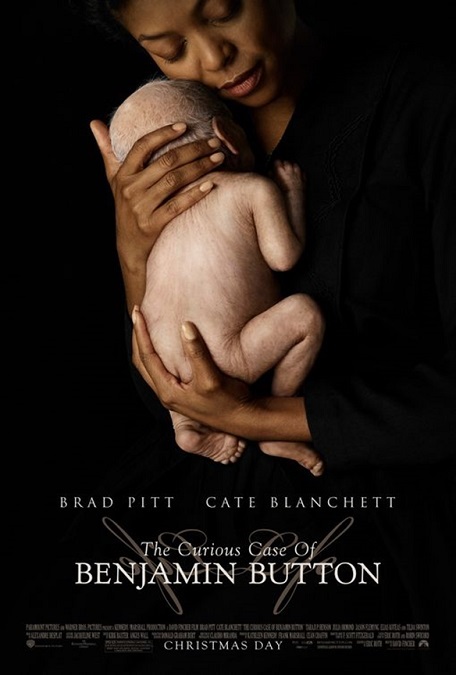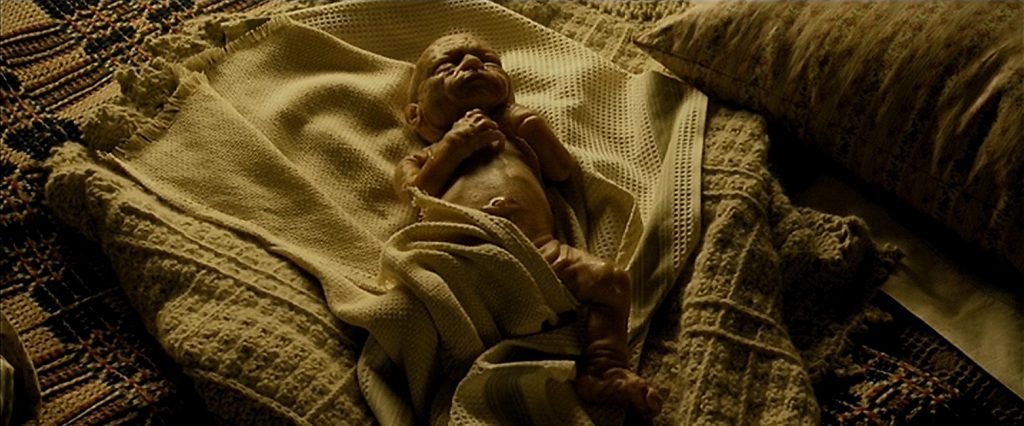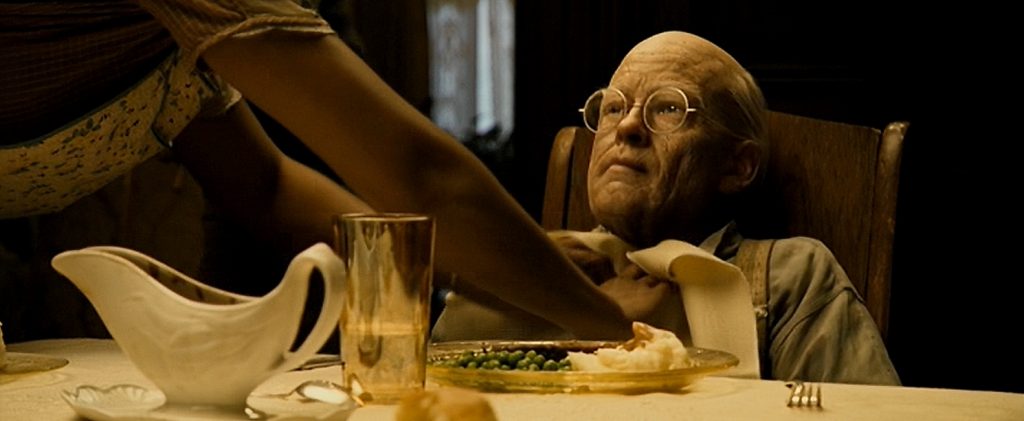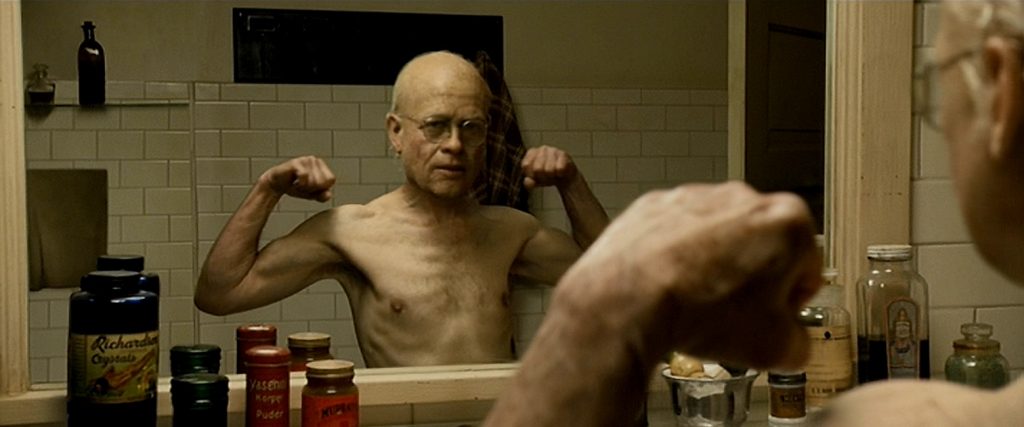



The Curious Case of Benjamin Button – 2008 (WINNER)

At first glance, you might wonder why this movie was nominated for the Best Visual Effects award, let alone why it won. If you just watch the movie straight through, there appear to be very few special effects, other than a couple of brief war scenes that took up only seconds of screen time, and a lot of really well-done composite shots. Sure, the main character was in heavy old-age makeup for most of the movie, but there was nothing terribly odd about that. But then you’d be wrong, just like I had been before I did a little research.
As I’ve said before, but best visual effects are the ones you don’t know are visual effects. For a little more than the first third of the movie, the main character, or at least his head, was completely computer generated, and I really had no idea! The movie is about a man who is born with the body of an old man, and ages backwards, until by the end of the film, he is an infant. As I watched the movie, I kept wondering how they found actors that looked and behaved so much like Brad Pitt. I eventually came to the conclusion that they just put Pitt in some pretty awesome makeup, and then digitally put his head on another actor’s body. That was closer to the truth, but it was so much more than that.
Apparently, they developed and perfected a new type of motion capture technology that allowed a computer to track not just a person’s movements, but also their emotions. They were able to fine-tune the technique to such an extent that they could accurately recreate every emotive muscle in Brad Pitt’s face in a computer. Thus, they didn’t just stick the actors head on another body. They created that head in a computer, aged it, lit it, and then attached it to the body so seamlessly, I still have trouble seeing through the illusion.
The technology was called Contour, a technique in which they applied a kind of phosphorescent powder to Brad Pitt’s face, then placing him in front of an array of rapidly flashing fluorescent lights. Connected to those lights was a network of special cameras, by which they could create a 3D digital image of his face that was thousands of times more detailed than conventional motion capture methods were capable of. They photographed these digital images in a range of different poses to create a database of facial expressions. They then filmed Pitt performing his scenes so the digital animators could use his performance as a reference when creating the CGI face. The result was an amazing performance that was entirely Brad Pitt, and entirely CGI at the same time.
All the articles I could find to research the effects for this film, focused on this new technology, but I have no doubt that there were also a number of detailed digital environments that were used as well, and of course, they were all perfectly done. And then there was the eighty-year-old infant, which was a clever combination of animatronics and CGI. Its presence on the screen was brief, though memorable. But it was really Pitt’s digital face in the first third of the film that really earned the movie its Oscar win, and never once looking at all animated, I think it deserved it.